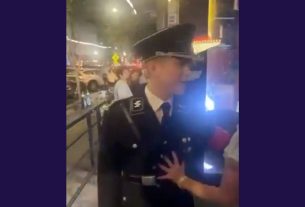PITTSBURGH ((JEWISH REVIEW)) — Jurors in the trial of the gunman who killed 11 Jewish worshipers in a Pittsburgh synagogue took less than two hours to find him eligible for the death penalty, setting up a final phase of the historic proceedings in which the gunman may be sentenced to death.
On Thursday morning, the seven women and five men on the jury unanimously found that Robert Bowers, who attacked the Tree of Life building on Oct. 27, 2018, met all four thresholds of intent necessary for capital punishment. The jurors also agreed with the government’s case that the crime carried four aggravating factors that exacerbated the shooter’s capital offenses. They were seemingly unmoved by the defense’s argument that the shooter’s antisemitism was a product of his delusion.
On June 16, the jury found the defendant guilty of 63 crimes, including 22 capital crimes — two for each fatality.
The final phase of the trial will begin on Monday. In that portion, the jury will decide whether to deliver a sentence of death or life imprisonment without possibility of release.
In that phase, the jury will hear impact statements from some family members of the 11 people murdered by the gunman. Jurors will also hear from people who were injured or otherwise affected. Prosecutors said they expected to bring seven witnesses over two to three days.
The defense will then bring witnesses to prove mitigating factors, which lawyers said they expected to last five to seven days. Those witnesses are expected to describe the hardships the gunman suffered over his lifetime.
“It has been nearly five years since 11 people were taken from us,” said Maggie Feinstein, the director of the 10.27 Healing Partnership, which frequently speaks for the families, in a statement.
“They were beloved and valued family members, friends and neighbors,” said Feinstein, who was in the courtroom. “They cannot speak for themselves, and so their family members will speak for them. In the next phase of the trial, our justice system will perform its duty to listen to their voices. We support them and we stand with them.”
The alacrity of the verdict — jurors met for about an hour after closing arguments on Wednesday, and less than an hour on Thursday morning — suggests they summarily rejected arguments advanced by the defense that the gunman’s antisemitism was a sign that he was delusional.
Expert psychiatric witnesses for both sides who interviewed the shooter recently say he has no regrets, and the defense sought to use that fact to bolster its medical arguments that he was schizophrenic and did not have the intent to kill required for a death sentence.
Outside the courtroom, Jeffrey Finkelstein, the CEO of the Pittsburgh Jewish Federation, said the argument that antisemitism is a delusion was a non-starter.
“It is clear that this was hatred of Jews. This was antisemitism. It is not mental health. They are two different things,” he said.
Some of the families of the dead and the injured were present in the courtroom when Judge Robert Colville read the verdict, as were two of the policemen who were injured during the attack.
The room was calm; there was little tension, and as they waited outside the courtroom to hear the verdict, the chatter among the families suggested they anticipated an eligibility verdict in part because of the how swiftly the jury brought the verdict
Members of the gunman’s family also were in the courtroom. One of the defense team brought his aunt a box of tissues; she never touched it.
The defendant, as he has done since the start of the trial, betrayed no emotion. He bent over a notebook and wrote, clad in a dark blue sweater and a light blue collared shirt. He wore plain black framed glasses, which he does not often do.
Judy Clarke, a famous death penalty attorney and Bowers’ lead attorney, leaned over him and chatted with him before jury came into the room. She patted his back before returning to her seat.
The jury were clad in light summer clothes reflecting the humid weather in Pittsburgh on Thursday.
After Colville dismissed them until Monday, lawyers for the defense and the prosecution sparred over the mitigating factors the defense planned to present in the next phase. The lawyers, mindful of the continued presence of the public in the courtroom, would not say what the factors were, but it appeared as if the government believed that some of the mitigating factors the defense proposed were not eligible for use.



